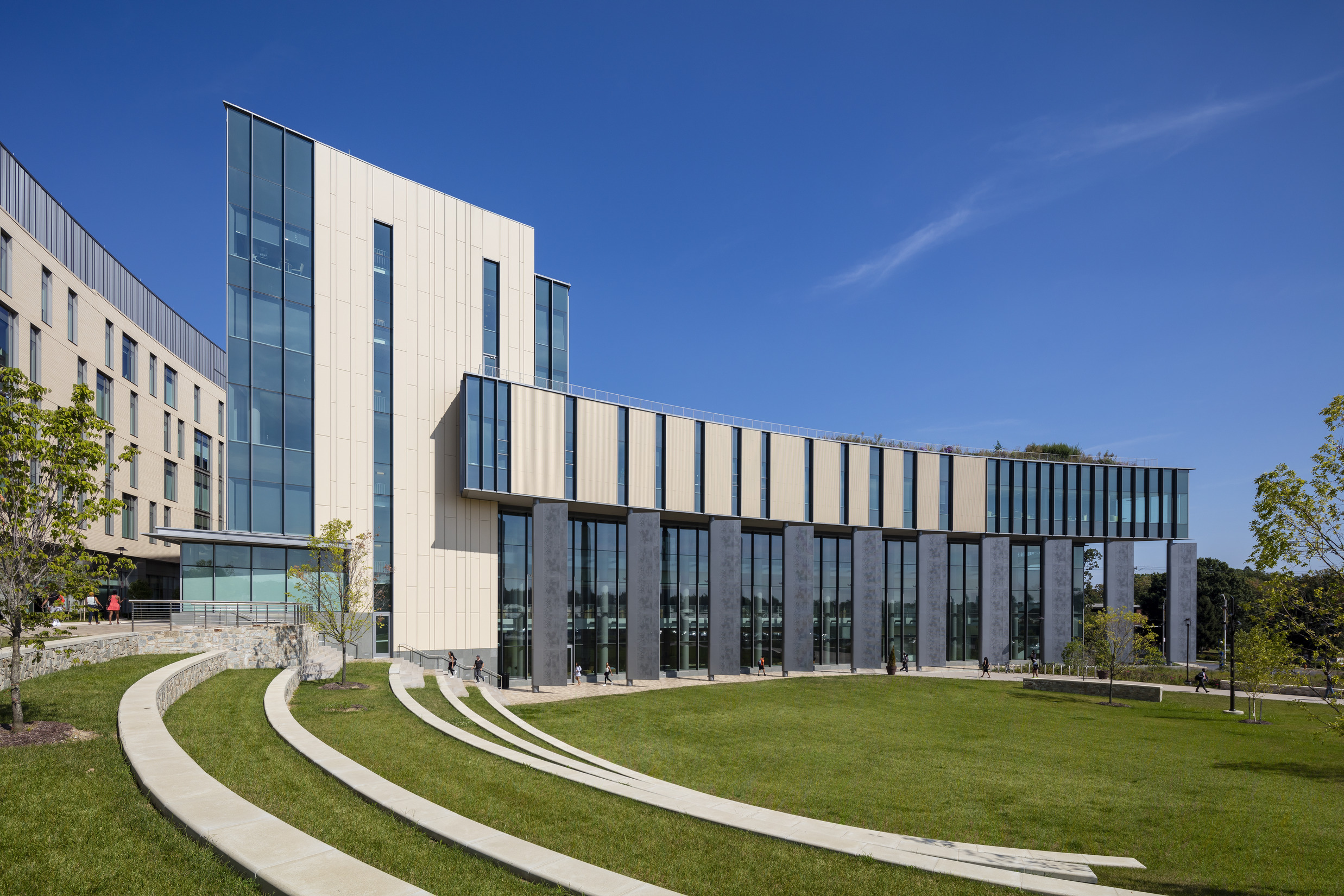In 2022 Maryland passed the Climate Solutions Now Act, which aims for a 60% reduction in greenhouse gases (GHG) by 2031 compared to a 2006 baseline and net-zero direct emissions by 2040. It calls for the implementation of Building Energy Performance Standards (BEPS) that apply to all buildings over 35,000 GSF with limited exceptions. Most notably, elementary and secondary schools can apply for exception but not higher educational buildings unless they qualify for another exception category. BEPS requires energy use reporting starting in 2025, compliance with interim emissions standards starting in 2030, and net-zero direct emissions in 2040. Penalties are assessed on an increasing scale starting in 2030 for non-compliance with emissions or EUI standards.
We’ve supported a variety of clients including Towson University, the University of Baltimore, Salisbury University, Bowie State University, and the redevelopment of Pimlico Race Course in understanding the implications of these requirements within the context of the planning and construction work.
From these experiences, we’ve identified two critical steps that we hope will help you as your institution advances toward decarbonization in Maryland:
1. Map your assets. To understand the scale of the decarbonization challenge to be solved, it’s worthwhile to map which assets a university maintains that are:
- Less than 7,500 GSF and therefore only subject to energy code,
- 7,500 GSF – 35,000 GSF and therefore subject to the HPGBP and energy code, and
- Larger than 35,000 GSF which must meet Maryland’s Building Energy Performance Standards
It’s also worthwhile to map the extent of an institution’s fossil fuel infrastructure to understand how many buildings are both over 35,000 GSF and meet at least part of their energy needs through fossil fuels that must be decommissioned between now and 2040.
2. Manage your metered data. Under the Building Energy Performance Standards, there are costs associated with leaving fossil fuel infrastructure in place starting in 2030 depending on how efficient or inefficient buildings fed by those systems are. By 2040, all covered buildings must be decarbonized to avoid financial penalties. Looking at historic, building-scale utility data can support our teams in pricing the consequences of the “business as usual” scenario to help institutions prioritize which facilities to renovate first or consider divesting. If an institution does not already have building-scale utility metering, we strongly advocate embarking on a metering program to add this infrastructure.
Addressing deferred maintenance across facilities with a variety of direct and indirect impacts on the educational mission is a common goal in campus planning. Decarbonization goals add nuance and complexity to planning for deferred maintenance. They are complimentary in that many deferred maintenance projects require updates to building systems and skins, the same areas of improvement that are often needed to decarbonize existing buildings. BEPS will require more significant renovations in many buildings as simply updating systems will not be sufficient when the fuel source also needs to be changed to non-combustion. In addition, campus-wide energy systems such as central utility plants may need to be re-envisioned to fully achieve decarbonization on a campus level.
Successful campus plans align facilities needs with opportunities to create high-quality spaces for teaching, learning, working, and living. Institutions with campuses of several over-35,000 GSF buildings that all require decarbonization should see BEPS as both a challenge and an opportunity. Needing to renovate much of a facilities portfolio on a tight timeline is an invitation to envision how those facilities can best serve future-focused pedagogical approaches, the Gen Alpha student, and the workforce needs of the mid-21st Century. Where might the built footprint be right-sized? Which renovations offer the best return on energy and facilities budget as well as opportunities to re-program and modernize interior spaces? Institutions that are best able to optimize their facilities for both energy performance and mission will have the competitive advantage.
While renovations are likely to be the focus of decarbonization planning, new buildings also have a key role to play. Some campuses continue to grow, and some will need new buildings to replace ones that simply cannot be reasonably adaptively reused. New construction must be fully decarbonized under the new standards, which can have operational cost implications vs. the business-as-usual case. Working with design and construction teams that can create high-performing building envelopes is crucial to mitigating operational cost impacts of non-combustion facilities. While not required by BEPS, reducing the embodied carbon of renovation and new construction is a best practice valued by LEED and green building rating systems.
Maryland is poised to be a leader in both decarbonizing the built environment and overall reductions in greenhouse gas emissions. Our firm is thrilled to leverage our experience with Maryland institutions to navigate these new, ambitious goals and use them as opportunities for key campus renewal strategies that advance both energy-efficiency and quality of life.
Allison Wilson is the sustainability director for Ayers Saint Gross. Laura Wheaton is an architect and planner.

























